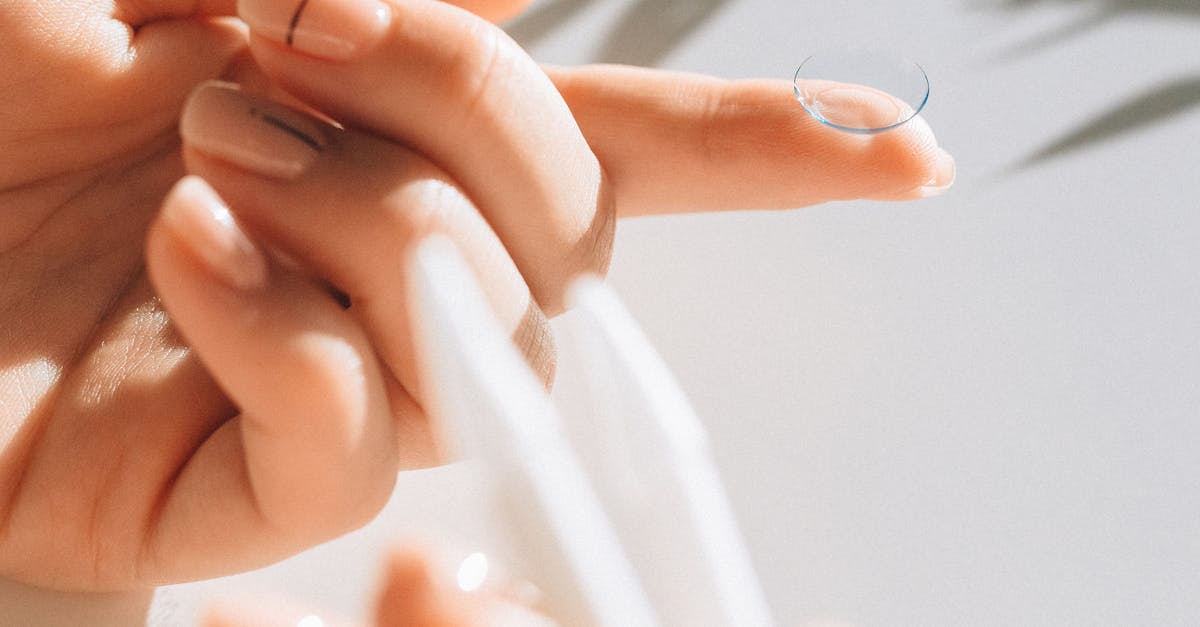If you’ve ever had glasses that just didn’t feel quite right, chances are the issue wasn’t just with the prescription—but with the measurements behind your lenses. At iDoctor in Glendale Heights, we’ve seen firsthand how precision in every detail makes all the difference, especially when it comes to your pupillary distance (PD). Whether you’re choosing from our exclusive selection of Cartier, Gucci, Tom Ford or Oliver Peoples frames, getting the PD right is essential for comfort, clarity, and showing off your true style.

What Exactly Is Pupillary Distance—and Why Does It Matter?
Pupillary distance, usually written as PD, is the measurement (in millimeters) between the centers of your pupils. This little number is the secret behind properly centered lenses in your glasses, ensuring your vision is crisp, comfortable, and your prescription works exactly as intended. When your PD is not accurate, you might experience eyestrain, headaches, or even blurred vision—no matter how advanced your lenses or chic your frames may be.
Common PD Ranges
- Most adults: typically between 54–74 mm (both eyes combined)
- Children: generally 43–58 mm
Remember, everyone’s eyes are unique, and so is each PD! That’s why we insist on double-checking these measurements for every patient at iDoctor.
How We Measure Your Pupillary Distance: The iDoctor Approach
At iDoctor, we rely on digital tools and advanced imaging—right down to our Optikam precision instruments—to make sure your PD is obtained with the highest possible accuracy. While online guides abound, nothing beats professional measurement, especially if you’re investing in luxury or custom lenses. Here’s how we typically take your measurement:
- Digital PD rulers: Quick, non-invasive, and exact to the millimeter.
- Customized for eyewear type: We’ll take single PD or dual PD (each eye) depending on your lens choice—whether for distance, reading, or progressives.
- Integrated into your eyewear fitting: PD measurement is always part of our comprehensive eye exam or when you’re choosing new frames.
If You Want to Measure Your Own PD at Home
We always recommend coming in for a professional measurement—especially if your prescription is strong, you wear progressives, or you’re investing in exquisite frames. But if you’re curious, or ordering a backup pair online, you can try the following at-home techniques:
What You’ll Need
- A millimeter (mm) ruler
- A well-lit mirror
- Optional: a friend to help
Self-Measurement (Mirror Method)
- Stand about 8 inches from the mirror in good lighting.
- Hold the ruler across your brow, aligning the zero with the center of your right pupil.
- Look straight ahead and read the measurement to the center of your left pupil. Do your best to keep your head and ruler level.
- Repeat this 3–5 times for consistency. If the numbers vary, try to determine why—maybe your ruler slid or you moved your eyes.

Friend-Assisted Measurement (Most Accurate at Home)
- Sit down, relax, and fix your gaze on a distant, stationary object.
- Have your friend stand in front of you, just below your eye level, and align the ruler’s zero with the center of your right pupil.
- Your friend measures straight across to the center of your left pupil, reading the mm mark.
- Repeat for accuracy, as even tiny head tilts or shifts can throw off the result.
For Reading or Progressive Lenses
If you’re ordering reading glasses, subtract 3 mm from your distance PD, or subtract 1.5 mm per eye for dual measurements. However, for multifocal or progressives (which are our specialty at iDoctor), we strongly encourage a professional fitting—tiny errors at home can drastically impact comfort and clarity in these advanced lenses.
Top Tips for Consistent, Accurate Measurement
- Always use a millimeter ruler—never inches!
- Keep your head and ruler level.
- Look straight ahead; don’t follow the movement of the ruler.
- Repeat measurements for consistency.
- Avoid using smartphone camera apps unless they’re guided by a professional or digital fitting system.

Why the Right PD Makes the Difference—Especially at iDoctor
Our patients across Glendale Heights, Bloomingdale, Glen Ellyn, and beyond come for more than just premium frames—they come for precision, style guidance, and a truly custom fit. Because we stock exclusive brands and advanced lenses, a perfectly measured PD ensures:
- Awesome visual comfort: Lenses are aligned directly over your pupils, making vision crisp and eliminating distortion.
- A painless transition to new prescriptions: Especially with progressives or specialty lenses, the right PD makes switching glasses a breeze.
- Frames that flatter: Well-aligned lenses keep your eyewear looking—and performing—its best, beautifully complementing your face.
- Protection against eyestrain and headaches: Just 2 mm of error can affect prescription strength and overall comfort.
What Happens If the PD Is Wrong?
Even the most stylish or high-end frames feel off when the lenses aren’t precisely set. Here’s what an incorrect PD can cause:
- Visual fatigue or eyestrain
- Headaches—often building throughout the day
- Difficulty focusing, especially when using digital devices
- Distorted or blurred vision, even with the correct prescription
- Annoying adjustment periods with every new pair of glasses
The iDoctor Difference: Precision, Technology, and Personalized Style
Our commitment to accuracy goes hand-in-hand with our passion for helping you express your unique style. Here’s how we do it:
- Cutting-edge diagnostic equipment and devices like Optikam, enabling us to take multiple, highly accurate measurements and provide a tailored fit—something online-only solutions simply can’t replicate.
- Every frame, every lens, expertly matched to your facial features and lifestyle needs, guided by our licensed opticians and advanced imaging tools.
- Insurance benefits maximized: Our team helps you make the most of your vision coverage, so you always get the highest quality for your investment.
Frequently Asked Questions about PD Measurement
- Is my PD on my existing prescription? Sometimes! But many prescriptions do not include it, especially older ones. We can always measure it for you at your exam or fitting appointment.
- Can I use the same PD for all my glasses? Not always—reading and computer glasses may need a slightly different PD. We’ll help select the right one during your consultation.
- If I get new frames, do I need a new PD measurement? For best results, yes—especially if your frame style or size changes. Customized frame fits are our bread and butter at iDoctor.
Your Next Steps: Book Your Precise, Personalized Fitting
Ready for eyewear so comfortable and clear it feels like it was made just for you? We invite you to experience the iDoctor difference—where every measurement, from PD to frame adjustment, is performed with meticulous attention to detail.
Book your appointment at our Glendale Heights boutique for a comprehensive eye exam, expert PD measurement, and a personalized style consultation. Whether you’re eyeing luxury Cartier or on-trend Gucci, peace of mind comes standard with every fit—and so does seeing (and looking) your absolute best.
Because at iDoctor, your eyes—and your style—deserve nothing less than perfection.





